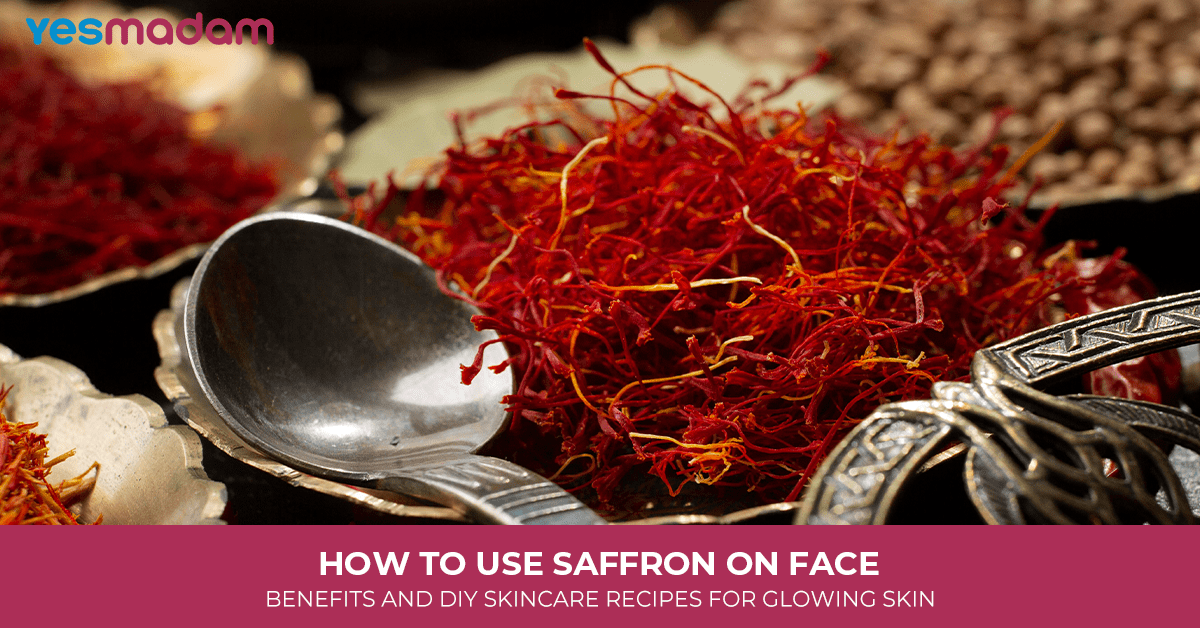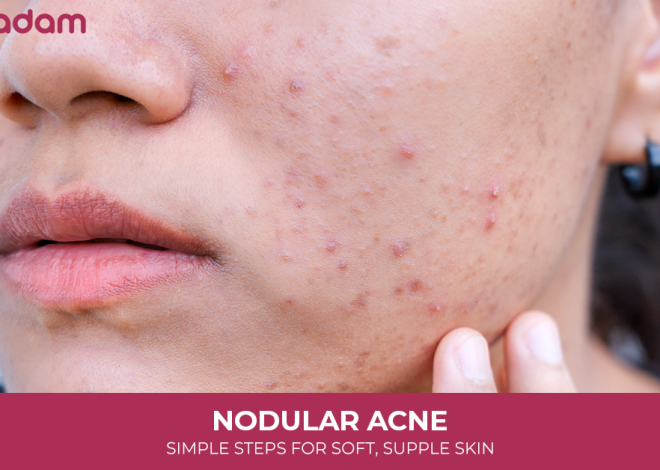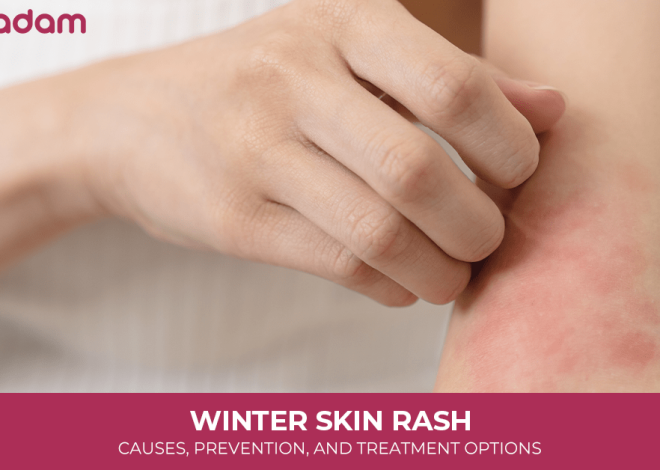
How to Use Saffron on Face: Benefits and DIY Skincare Recipes for Glowing Skin
Saffron, or “red gold,” is popular for its culinary uses, but did you know it can also be a beauty secret for healthy and radiant skin?
Saffron is a favourite ingredient among many beauty enthusiasts because of its antioxidant and anti-inflammatory benefits.
What’s even better is that you can reap the benefits of saffron right at home, with some simple yet effective DIY skincare recipes.
This guide on how to use saffron on face will take you through its various DIY uses to maximize its benefits, and certain safety tips to keep in mind while applying saffron on the face.
Table of Contents
What is Saffron in Skincare?
Saffron, also known as “red gold”, has long been valued for its skin-enriching properties in Ayurveda. It can prove to be an amazing cosmetic ingredient as it can brighten the skin effectively. Derived from a flower called crocus sativus and characterised by unique crimson stigmas. These stigmas or saffron strands are collected and dried for various skincare uses or applications.
There are many saffron uses or benefits for skin, like skin whitening, eliminating signs of age spots, freckles, and other skin imperfections on the face, providing it with an even skin tone with a touch of radiant glow.
More Information For You: Glycerin for Skin Whitening
Benefits of Applying Saffron on Face

Applying saffron to your face offers benefits like reducing acne and blemishes, fading hyperpigmentation, and promoting a brighter skin tone.
Here are five key saffron for face benefits:
1. Fades Blemishes and Hyperpigmentation: Saffron helps lighten dark spots, acne scars, and uneven skin tone by reducing pigmentation and hyperpigmentation.
2. Combats Acne: With its antibacterial properties, saffron can fight acne-causing bacteria, reduce redness and swelling associated with acne, and prevent the formation of pimples and blackheads.
3. Promotes a Brighter Complexion: By acting as an antioxidant and stimulating cellular regeneration, saffron enhances skin radiance and can even provide a natural glow.
4. Reduces Signs of Aging: Saffron’s antioxidant properties help protect against free radical damage and promote collagen formation, which can improve skin elasticity and reduce the appearance of wrinkles.
5. Provides Deep Hydration: Saffron can effectively hydrate the skin, leaving it feeling soft, nourished, and plump, contributing to a healthier and more vibrant complexion.
Don’t Miss: Multani Mitti Benefits for Hair
Step-by-Step Guide on How to Use Saffron on Face: 4 DIY Methods to Maximize Benefits

If you have been asking yourself about how to use saffron on face, or simply how to maximize the aforementioned benefits, here are the 4 innovative DIY ways of making the most of it as highlighted below:
For adding radiance to skin
Saffron, when used as a face pack, helps promote smooth and radiant skin. For best results, apply it once a week.
- Rinse and cleanse your face with a cloth prior to applying saffron for face pack.
- Combine sandalwood powder(1 teaspoon), 2-3 saffron strands, milk (2 spoons).
- Apply the pack on damp skin.
- Massage the pack thoroughly using circular motion.
- Keep the pack on for 20 minutes to dry.
- Rinse off.
For brightening skin tone
If you’re wondering how to apply saffron on face for skin whitening, you can prepare a saffron face pack by combining it with yogurt or honey.
- In milk, soak a few saffron strands for 2 hours.
- After that, massage this milk on your face and neck.
- After a few minutes, rinse off.
- Apply this regularly for best results.
For treating blemishes and acne
Combining saffron with basil leaves makes for an effective remedy for the treatment of acne, blackheads, and blemishes. Basil leaves effectively help eliminate the acne-causing bacteria.
- Prepare a fine paste by mixing 5-6 basil leaves and 10-12 saffron strands.
- Apply the pack on your face.
- After 10-15 minutes, rinse off using lukewarm water.
For adding glow to tired skin
This face mask helps refresh your tired, dull skin and also helps eliminate dark circles. The mask exfoliates your skin and enhances blood flow. This is the best DIY to get glowing and smooth skin.
- Mix 2-3 saffron strands with 1 teaspoon of water.
- Set aside the mixture overnight to develop.
- To it, add milk ( 1 teaspoon), a pinch of sugar, and olive or coconut oil (2-3 drops).
- Further, dip a piece of bread into the mixture and dab it on your face.
- Wait for the mixture to dry for 15 minutes.
- After that, rinse off.
Additional Ways of Incorporating Saffron into Your Skincare Routine
Other than the DIY methods mentioned above, there are a few other versatile saffron uses for face to get glowing skin.
| Saffron uses for face | Ingredients | How to apply | Benefits |
| Saffron face mask | 3- 4 saffron strands, 1 spoon of honey. | Combine saffron strands (mashed) and honey. Apply to the face. | Helps soothe the skin. |
| Saffron face gel | 4-5 saffron strands, 2 tablespoons each of rose water and aloe vera gel. | Mix the mashed saffron strands with other carrier ingredients. Apply a small amount to the skin and rub until fully absorbed. |
Alleviates skin inflammation and provides a cooling effect. |
| Saffron face toner | 3-4 saffron strands, rose water, or witch hazel. | Soak saffron strands in rose water or witch hazel for 1-2 days. Spray on face gently. |
Helps brighten the skin complexion. |
| Saffron moisturiser (oil treatment) | Saffron strands and carrier oils such as jojoba oil or coconut oil. | Pour saffron strands in carrier oil and directly apply to skin. | Works as a phenomenal moisturiser and spot treatment. |
| Saffron sunscreen | a small cup of milk, 2-3 saffron strands. | Overnight, soak saffron strands in 1 cup of milk and refrigerate. Massage the milk on the skin the next morning. |
Removes sun tan, makes skin tone lighter like sunscreen. |
Safety Precautions for Using Saffron on the Face
While saffron is usually considered safe for the face, it is still good to keep certain things in mind before applying saffron to the face:
- Do a patch test: A patch test is a good idea, whether in case of DIY saffron-based recipes or if using a saffron-infused skincare product. It averts irritation and harmful side effects.
- Use a small quantity: Saffron is highly potent, and it is possible to stretch even a small amount a lot and also owing to its high cost.
- Select good-quality saffron: Using high-quality and authentic saffron is a must for at-home skincare recipes. Cheaper quality may contain additives and may cause skin irritation.
- Weigh the health conditions: If you are already using products to treat another skin concern, it is always recommended to consult with a skin professional before applying saffron on your face.
Conclusion
It is quite evident from how to use saffron on face recipes that saffron can help rejuvenate, hydrate, and nourish the skin, while also providing skin whitening benefits. There are versatile and amazing ways of applying saffron on the face. Whether you apply it as a mask, soak it in water or milk, or dilute it with oils, you can notice visible results within a few weeks.
FAQs
Can we apply saffron on our face daily?
Yes, you can apply saffron to your face daily as it has beneficial antioxidant, anti-inflammatory, and exfoliating properties that can help brighten the skin, minimize blemishes, and provide a radiant glow.
What are the side effects of saffron on the face?
The side effects of saffron on the face involve allergic reactions like rashes, redness, and itching, from contact dermatitis or direct application, and potential dryness or irritation due to its potent nature.
Which is better for skin, saffron or turmeric?
Neither is inherently “better”; turmeric is generally superior for inflammatory concerns like acne and rosacea, while saffron excels at providing hydration, radiance, and addressing pigmentation and aging.
Can saffron remove tan?
Yes, saffron is traditionally used as a home remedy for removing tan because of its skin-lightening and anti-pigmentation properties.
Does saffron make you look younger?
Yes, saffron can help you look younger by reducing the appearance of fine lines and wrinkles and improving skin radiance.
Can the face glow after applying saffron?
Yes, applying saffron can help your face glow due to its antioxidant and anti-inflammatory properties, which brighten the complexion, improve skin tone, and reduce dullness.
What is the right way to use saffron on your face?
Soak a few saffron threads in milk, rose water, or yogurt for 15-30 minutes to infuse the liquid. You can add honey for moisture or sandalwood powder for a face mask, then apply the mixture to your cleansed face and neck.
How to use saffron for removing dark spots?
Apply the saffron-infused oil as a spot treatment to pigmented areas, or mix a few drops into your regular facial oil or moisturizer for removing dark spots.
Can you mix saffron and turmeric for skin?
Yes, you can mix saffron and turmeric for your skin, as this combination is used in traditional beauty practices and products to achieve glowing skin, reduce pigmentation, and address acne.
What’s the difference between kesar and saffron?
There is no botanical difference between kesar and saffron; they are the same spice, but “kesar” is the name used for saffron in India and other South Asian regions, while “saffron” is the universal and international term.



